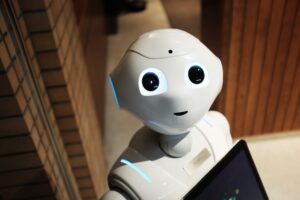Just like any other industry, the physical security industry is shaped by different trends and challenges. In recent years, technology has played an important role in keeping people, facilities, equipment, and resources safe. As technology keeps evolving, they will power even more devices and software solutions that will help us detect threats, prevent crimes, and reduce response time.
From thermal scanning to video analytics, there are numerous technologies used to improve our personal security. Some recent technologies have proved so valuable that they are already a prevalent part of our society. Check out the latest technology trends that have developed in physical security.
Artificial intelligence
Like many industry sectors, it’s impossible to talk about technology trends without highlighting artificial intelligence and machine learning. These technologies are already impacting our daily lives, and they are now used to power many physical security solutions.
Thanks to AI and machine learning, machines and computers can gather or analyze data related to security forecasts. The technology is capable of making decisions and offering predictions. This allows them to monitor different situations, detect potential threats, and alert the human workers in charge of security, among other things.
The Internet of Things
Remote working has been made possible by cloud technology and the evolution of the Internet of Things, or IoT. Secure cloud solutions help keep sensitive data safe, no matter where workers are working from, while the IoT allows for certain tasks to be automated for the benefit of everyone.
AI-powered IoT devices can handle different repetitive or dangerous tasks. This helps cut operational costs, but above all, it helps keep people and facilities safe. For example, businesses can count on technology to adjust heating and cooling and check cold storage to ensure food does not spoil and become unsafe to consume.
Threat detection platforms
A threat detection platform is a technology that can combine sensors, cameras, and a custom software solution. It is used to detect threats such as guns and knives in public spaces and alert security personnel. Using the platform, the staff can identify and apprehend suspicious individuals before they have a chance to harm anyone.
Threat detection platforms are powered by artificial intelligence. They are an excellent way to complement the security infrastructure of shopping malls, large office buildings, and other public venues. By identifying threats and allowing staff to act promptly, this technology can truly save lives.
Video analytics
Similar to a threat detection platform, video analytics software can detect threats and prevent crimes. This technology can also detect movement, read license plates, or count the number of people in a crowd. Video analytics can complement and improve surveillance operations, reducing the number of false alarms and allowing security personnel to handle different situations more effectively.
Remote guarding solutions
Remote guarding solutions aim to provide security guards with efficient tools that will help them cover more ground while performing their duties. Video analytics, motion alarms, security cameras and mobile monitoring do not replace human security guards. Instead, these technologies can help them detect threats and identify risks. Users will make informed decisions so they can, ultimately, keep people, buildings, and equipment safe.
Visual verification
False alarms increase operational costs and add unnecessary pressure on law enforcement agencies. To reduce the numbers of false alarms, security companies are now turning to visual verification. Visual verification features a camera with a motion sensor that only records footage when an alarm system is triggered.
The images captured by this camera are then monitored. You will analyze the pictures to determine whether there is a real threat or the alarm was triggered by mistake. Visual verification is less expensive than continuous CCTV monitoring, as footage will only be captured and monitored when there is a possible threat. The authorities will not be alerted if an alarm system was triggered by an animal or by human error.
Drones
Drones can serve different purposes, including monitoring facilities and installations, and detecting threats. Since these devices can be equipped with cameras and microphones, they can effectively conduct surveillance operations, inspect sites and facilities, detect physical threats, and help reduce response time. You can expect to see drones handle additional security tasks in the upcoming years.
Thermal scanning
Finally, thermal scanning technology is now being frequently used to check body temperature, which can help detect employees or customers who have a fever. Since fever is a common symptom of COVID-19 and many other infectious diseases, this technology can help prevent the spread of contamination.






